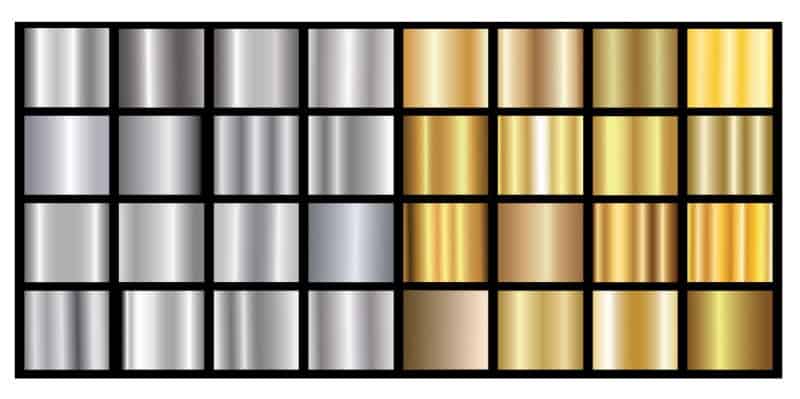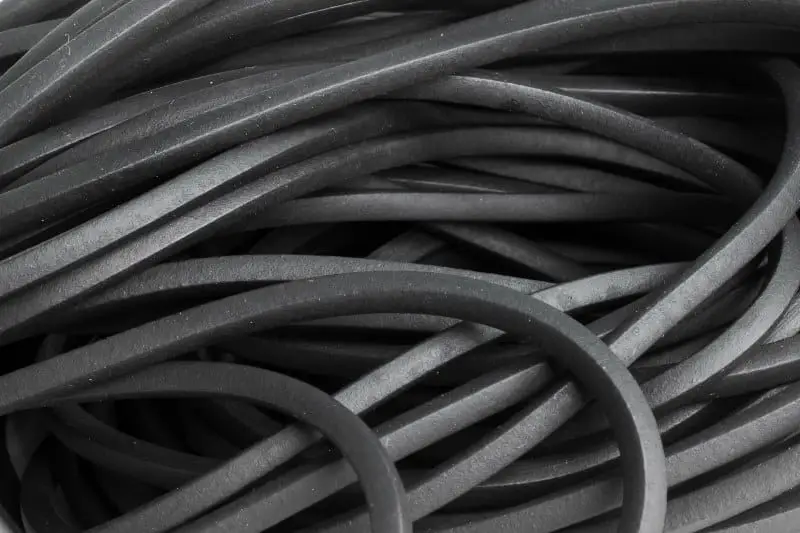Most of the appliances and gadgets used by humans nowadays are sources of electromagnetic radiation. These radiations have been proven to have an adverse effect on the health and wellbeing of humans. What, then, are the ways of protecting oneself against EMF radiation? Read on to find out.
Rubber does block EMF radiations. This has been proved in an experiment where a composite rubber matrix was used to absorb forms of EMF radiations. However, the rubber used in this experiment has some quantities of metallic elements such as manganese, lithium, and iron.
Materials with the ability to block EMF radiations do this with different methods. These methods are dependent on the constituents of the materials and their physical properties. You will get a detailed explanation of the methods of EMF blocking in this article.
How Does Rubber Block EMF?
The use of electrical and wireless gadgets in the home and office is one of the major sources of EMF radiations. While the safest option to reduce or eliminate the adverse effect of the radiation on human health is to stop the use of these gadgets, we discover that this is practically impossible as essential human activities revolve around the use of these gadgets.
The next safest option is to use protective materials, also known as EMF blockers. These EMF blockers are materials with the ability to attenuate or block the movement and intensity of EMF radiations. These materials range from metals like aluminum and copper to materials like leather and rubber.
While the blocking capacity of these materials depends on their different physical and chemical compositions, there are three primary ways through which these materials block EMF. These methods are:
- Reflection
- Absorption
- Multi-reflection
Reflection
This is the primary method that most materials use to block EMF radiations. Materials with the ability to reflect off EMF radiations usually contain high quantities of free ion carriers. These charges, which could be electrons or holes, then interact with the approaching EMF radiations.
It is the interaction of these ion carriers and the radiation that results in the reflection of the EMF radiations off the surface of the material. In essence, materials that can effectively reflect incident EMF radiations off the surface of the material must be conductive.

Absorption
Absorption is the second-most popular method that most materials used to block EMF radiations. In this method, incident EMF radiations are absorbed by the surface of the blocking materials and convert to another harmless form of energy (heat). Although this method is not as popular as the first (reflection), it is considered the safest due to the absorb-and-convert mode of operation.
Materials that can absorb EMF radiations must have electric or magnetic dipoles. These dipoles are used to interact with the incident radiations causing the absorption of the EMF radiations. The dipoles used in these materials can be divided into two, electric dipoles and magnetic dipoles.
While electric dipoles can be gotten from materials with high dielectric constant, magnetic dipoles can be derived from materials with high permeability. The presence of either of these qualities in a material makes it eligible for an EMF absorbing material.
Multi-reflection
Multi-reflection works for materials with large specific surface areas. As suggested by the name, the incident radiation is reflected numerous times along the surface of the materials and with the inter-layers of the materials. Another type of material that can be used for multi-reflection is one with a large phase boundary.
Attenuation
While this is not a method used to block EMF radiations, it is an effective process in reducing the intensity of the EMF radiations. This method forms the basic form of defense that most materials provide against EMF radiations. It involves the reduction in the intensity of incident radiation to a point where it has little or no effect on the individuals around.
A lot of materials can offer this effect, although they differ in capacity.
There is more on the EMF blocking ability of rubber in this video.
Other Materials Used For EMF Blocking
Apart from rubber, other materials can be used to block or reduce the intensity of EMF radiation. According to technicians and engineers, these materials can block EMF radiations to a varying degree proportional to their capabilities. The following are some of the materials that can be used to block EMF radiations.
Lead
Lead is a vital and efficient EMF blocker. Generally, it is used to reduce the effect of any type of radiation. Radiologists and engineers that specialize in nuclear radiation acknowledge the efficacy of lead in blocking radiations. Patients undergoing X-Ray examinations also use vests made of lead to protect themselves. It has been one of the most reliable shield materials in the industry for many years now.
Aluminum
This is the most popular EMF shielding material in the industry at the moment. From aluminum foils to phone cases made from aluminum, there are various uses in which aluminum is used to reduce the intensity of EMF radiations. The reason for its widespread use is cost-effective, efficient, and non-ferrous properties. Other features such as high conductivity, appropriate weight-to-strength ratio, and many others make aluminum stand out as one of the best materials for EMF radiations.
Copper
Another efficient EMF blocking material that comes to mind is copper. Copper has excellent EMF blocking abilities. A lot of engineers would instead use copper than any other material for EMF radiation blocking. This is because it blocks both radio and magnetic waves. Therefore, its usage provides double advantages in terms of radio and magnetic wave protection.
The reason copper is not as widely used as other materials is its cost. Therefore, only businesses and enterprises use the material for EMF blocking most times.
Silver

If you are looking for a lightweight EMF blocking material, then silver is your best bet. Silver combines the EMF radiation blocking ability with lightweight to rank as one of the best EMF blocking materials. However, as it is with copper, silver is also costly. Hence a lot of people cannot afford it for EMF blocking activities.
These are some of the protective materials used in the industry to reduce the intensity of EMF radiation. As it has been said earlier, these materials provide attenuation against EMFs and not a total blockade.
How to Choose EMF Blocking Materials
It is important to protect oneself from the dangers of over-exposure to EMF radiation. With the health risks associated with the radiation, this protection becomes all the more important. In a bid to shield one against EMF radiations, some materials have been identified as the ideal EMF blocker. These materials differ in terms of EMF blocking ability.
Thus, it is important to consider some factors while selecting the ideal EMF blocking materials for your use. These considerations are important to
The factors to consider when selecting EMF shielding materials include
- Degree of Attenuation
- Impact of EMF
- Weight
- Price
- Heat and Thermal Conductivity
Degree of Attenuation
This alludes to the capacity of the material to decrease the power of EMF radiation going through it. Attenuation viability changes from material to material. In this way, the attenuation ability of the materials determines the magnitude of the EMF is attenuated.
Impact of EMF
By and large, when EMF goes through a blocking material, it makes a few changes to the material’s physical and chemical properties. In this manner, it is essential to know the EMF’s impact after passing through an EMF blocking material.
For instance, metals debase in specific ways in the wake of being utilized to constrict EMFs. Concrete likewise debilitates with escalated EMF blocking. These are examples showing the repercussions of EMFs going through a material.
Guarantee that the material you are picking will offer enduring protection against EMFs, and have the option to hold its trustworthiness after use. All the more significantly, guarantee that material doesn’t discharge EMFs after EMFs have gone through it, as it is found in certain materials.
Weight
This factor can likewise be alluded to as thickness. There is a standing principle that the thicker a material, the higher its EMF blocking capacity. To an exceptionally huge degree, this guideline holds.
Consequently, guarantee that the picked material is sufficiently thick to give satisfactory security against EMFs.
Price
This is a significant thought, as well. A few materials are practical, which means they give superb assurance at reasonable costs. They are different materials that are somewhat costly. While these materials cost more, they offer preferable security over less expensive materials.
Heat and Thermal Conductivity
This factor is very significant as it shows one of the impacts of EMF weakening on materials. Many EMF blocking materials get warmed up when EMFs goes through them. Accordingly, the selected material must have a high coefficient of heat conductivity. This guarantees the material doesn’t wear out or burst into flames while being used.
Ordinarily, rubber cannot effectively block EMF radiations. However, the ability to block EMF radiation is given by the addition of metal additives. These metal additives such as manganese, ferrite, and many others confer the absorptive feature on composite rubber. Thus, composite rubber (rubber that has metal additives) blocks EMF radiation through absorption.
Conclusion
EMF blocking has ranked as one of the most effective ways of preventing the adverse effects of EMF on the human body. As a result, many materials have been used to block or attenuate the EMF radiations. These materials block EMF using three major processes; reflection, absorption, and multi-reflection.
The ability of any material to use any of these methods depends on its physical and chemical properties. While rubber can’t block EMF radiation ordinarily, the addition of metal additives gives the material absorptive properties, which is used to effectively block EMF radiation.


